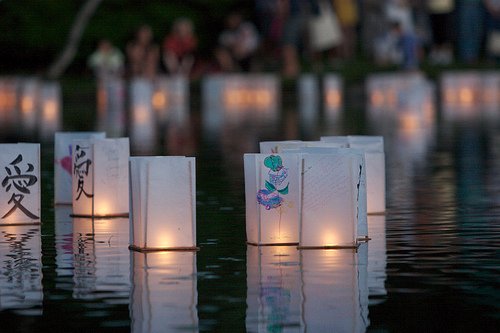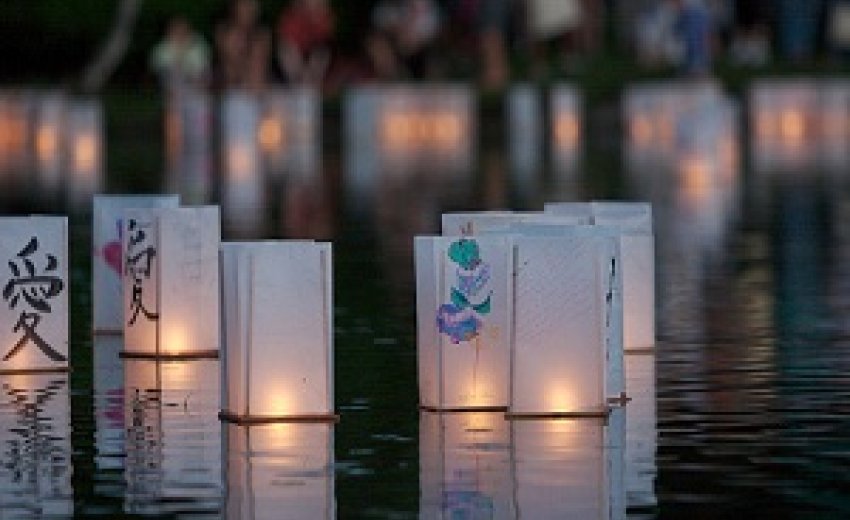Sep 8, 2010:  Liberals and conservatives have chosen sides over the Muslim community center near Ground Zero and plan to use the anniversary of September 11 as their battlefield. Abortion polemics are out; the debate over Islam is in. And so, come this Saturday, there will be two massive demonstrations: one protesting the Muslim community center near Ground Zero, and one supporting it and religious freedom. Every religious group in America, it seems, has chosen a side.
Liberals and conservatives have chosen sides over the Muslim community center near Ground Zero and plan to use the anniversary of September 11 as their battlefield. Abortion polemics are out; the debate over Islam is in. And so, come this Saturday, there will be two massive demonstrations: one protesting the Muslim community center near Ground Zero, and one supporting it and religious freedom. Every religious group in America, it seems, has chosen a side.
Instead of joining one side or the other, Rev. T.K. Nakagaki will host his annual memorial service for the dead. The service takes place at Pier 40, overlooking the Hudson River, at 6 PM. Everyone from both sides of this new conflict is invited to pray for the dead, all together.
The service is both Buddhist and interfaith. At its center is the traditional Obon ceremony for the dead, loosely translated as the Floating Lantern Ceremony. Rice paper lanterns are inscribed with the names of the dead, lit with candles, and floated out to sea (in this case the Hudson River, via the assistance of the New York Kayak Club). The United Sikhs, a social service Sikh group, will provide food as part of its spiritual practice.
Before the lanterns go out, a series of interfaith prayers will be led by the Interfaith Center of New York.
The history of the service is this: two days after 9/11, the Interfaith Center held a service with the Secretary General of the United Nations, Kofi Annan, followed by a press conference where 14 Muslim leaders condemned the attacks. Nakagaki attended both. He spoke eloquently about how Japanese Buddhists were put in internment camps after Pearl Harbor. In response to this, as a Buddhist, he had to stand up for innocent Muslims here.
In the following days, Nakagaki watched the widely televised Yankee Stadium service but saw that there was no Buddhist representative. Why were they left out? In response, Nakagaki created this Buddhist interfaith service the following year. The Interfaith Center helped with making sure it is inclusive. Hundreds of people come annually.
Nakagaki wants to make something clear: everyone is invited to this service, because it is a service for the dead. And that includes people with different opinions about the community center at Ground Zero. At some point differences must be put aside, peace must be sought, and the dead must be prayed for. This is Nakagaki's message.
 Nakagaki, a Japanese Buddhist priest from the Jodo Shinshu tradition, has known Imam Fiesal Abdul Rauf personally since 1996. They have been to each other's houses of worship. Nakagaki supports his endeavor to be a good citizen of this city through his faith, as he does through his. But on this day the most important thing to do is pray for the dead, and pray for peace.
Nakagaki, a Japanese Buddhist priest from the Jodo Shinshu tradition, has known Imam Fiesal Abdul Rauf personally since 1996. They have been to each other's houses of worship. Nakagaki supports his endeavor to be a good citizen of this city through his faith, as he does through his. But on this day the most important thing to do is pray for the dead, and pray for peace.
This leads to a question all of us in favor of interfaith and religious freedom face: what is the best way to respond to the attacks against a Muslim community center that is not at Ground Zero, is not a mosque, does not harbor terrorists, and is run by people we know to be upstanding citizens?
Yes, the Tea Party types were the first to use our shared day of mourning for their one-sided cause, but it should be noted that many of the "9/11 Families," including the leadership of the Tribute Center, have asked the organizers of both protests to cancel them.
If timing is everything, then a Buddhist approach to conflict, for this situation, may be an opportunity to take a step back, to be thoughtful with those we most disagree with, whichever side we are on. Perhaps it will help us, we who want to live together here, to move forward.
For more information about the Floating Lantern Ceremony, please go to: http://interfaithmatters.wordpress.com.

